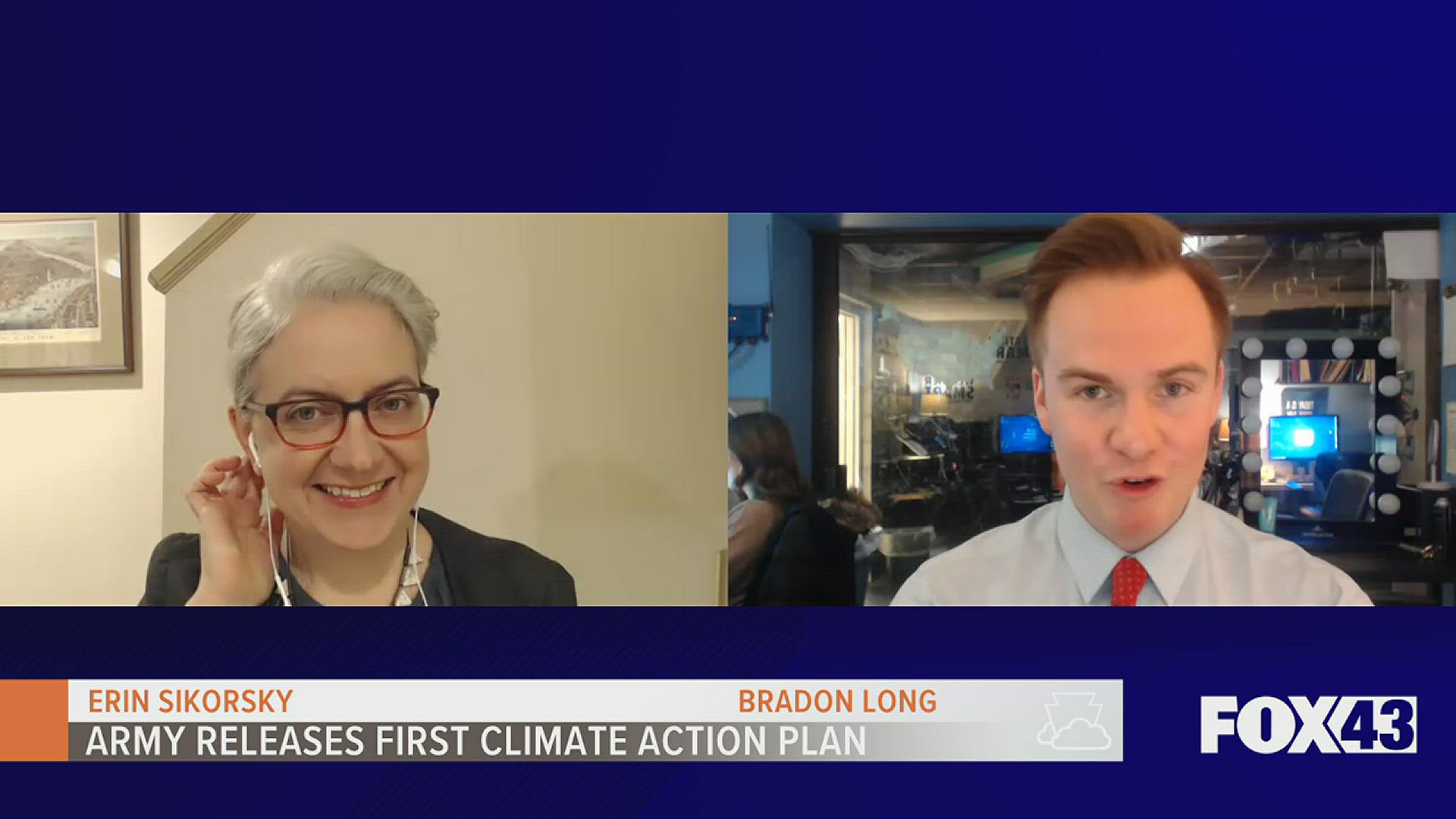As we see more and more extreme weather events prompting humanitarian aid response by the U.S. military, the U.S. Army released its first climate strategy.
"Whether it is wildfires in California that are forcing base evacuations... or hurricanes impacting the Gulf Coast, which have caused billions of dollars in damage in recent years to Air Force bases, climate change is posing a threat to military readiness and installations," Erin Sikorsky, Director of both the Center for Climate and Security as well as the International Military Council on Climate and Security, said.
The plan aims to cut the Army's carbon emissions by half by the end of the decade, electrify all non-combat vehicles by 2035 and head to net-zero emission by 2050.
"Climate change is making the world more unsafe and we need to act," Secretary of Defense Lloyd Austin said.
On top of those objectives listed above, the Army will also install a microgrid for electricity on every military installation by 2035, develop charging capability for tactical vehicles by 2050 and reduce operational energy and water use by 2035 as well. Training will prove vital in this changing environment.
"Previously, the military has talked about 'owning the night' with night vision. Now they'll need to own the heat," Sikorsky said.
As we've said before, climate change increases the likelihood of weather extremes. Drier areas will get even more dry. Wet areas will see more moisture and flooding. But experts believe it will create other extremes.
"When you have climate change like drought or desertification, agriculture is no longer viable for communities," Sikorsky said. "That presents an opportunity for extremist groups to increase recruitment, to put pressure on governments that can't manage the climate risks that are occurring."
There's no estimated cost within the plan itself, but in a nation where defense spending outpaces that of the majority of our closest allies combined, there will be areas where money doesn't have to be spent.
"If the local utility grid where the base is located has already moved to electricity, the military can just plug into that and benefit," Sikorsky said. "But there will still need to be some funding as well."
That funding will depend on follow through by the U.S. Congress.
Climate change threatens America’s security and is altering the geostrategic landscape as we know it," Secretary of the Army Christine Wormuth wrote. "The time to address climate change is now."
Until next time,
-Chief Meteorologist Bradon Long

